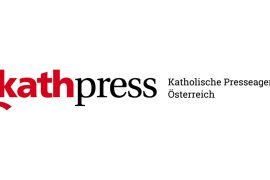U.S. Federal Aviation Administration (FAA) chief Steve Dickson is “100 per cent confident” in the safety of the Boeing 737 MAX, but says the airplane maker has more to do as it works to improve its safety culture.
Dickson on Wednesday signed an order to allow the bestselling plane to resume flights after it was grounded worldwide in March 2019 following crashes in Indonesia and Ethiopia that killed 346 people, including 18 Canadians, and led to Boeing’s biggest crisis in decades.
The order will end the longest grounding in commercial aviation history and paves the way for Boeing to resume U.S. deliveries and commercial flights by the end of the year.
“We’ve done everything humanly possible to make sure these types of crashes do not happen again,” Dickson told Reuters in a 30-minute telephone interview, noting that design changes “have eliminated what caused these particular accidents.”
The FAA is requiring new training to deal with a key safety system called MCAS, which is faulted for the two fatal crashes, as well as significant new safeguards and other software changes.
“I feel 100 per cent confident,” said Dickson, a former airline and military pilot, who took over as FAA administrator in August 2019 and took the controls for a 737 MAX test flight in September.
In a video message released on Wednesday, he said that the 20-month review was “long and gruelling, but we said from the start that we would take the time necessary to get this right.”
Canadian Transport Minister Marc Garneau said commercial flight restrictions for the operation of the 737 MAX aircraft in Canadian airspace will not be lifted until the government is satisfied that all its safety concerns have been addressed, and that enhanced flight crew procedures and training are in place in Canada.
“Transport Canada safety experts continue their independent validation process to determine whether to approve the proposed changes to the aircraft,” Garneau said in a statement. “We expect this process to conclude very soon. However, there will be differences between what the FAA has approved today, and what Canada will require for its operators. These differences will include additional procedures on the flight deck and pre-flight, as well as differences in training.”
‘Cultural changes take a long time’
Dickson said he emphasized to Boeing the importance of safety. “I understand they have a business to run, but they don’t have anything if they don’t have a safe product,” Dickson said.
Dickson suggested Boeing has more to do to improve safety.
“They have taken some actions, but it’s going to take more than putting new processes in place and moving boxes around the organization chart. Cultural changes take a long time to take effect and we’ve got to be skeptical,” he said.
Boeing said it is “committed to learning from our mistakes to build a safer future so accidents like this never happen again.”
To unify safety responsibilities across the company, more than 50,000 engineers have been brought together in a single organization that includes a new product and services safety unit, Boeing said.
“We will continue to work with regulators around the world and our customers to return the airplane back into service worldwide,” Stan Deal, president and CEO of Boeing Commercial Airplanes, said in a statement.
The FAA has also come under harsh criticism over its certification of the 737 MAX. The U.S. House of Representatives approved a reform measure on Tuesday of the FAA’s aircraft certification program.
Rep. Peter DeFazio, a Democrat who chairs the transportation and infrastructure committee, said the FAA failed to properly ensure the safety of the 737 MAX, and called aircraft certification “a broken system that broke the public’s trust.”
Fragmented communication
Dickson acknowledged there was fragmented communication within the FAA and between the FAA and Boeing during the 737 MAX certification. He noted the agency is adopting certification reforms and improvements in response to outside reviews of the 737 MAX certification.
The FAA could take new enforcement actions or issue new civil penalties against Boeing over the 737 MAX and on other issues stemming from a 2014 settlement agreement, but Dickson did not elaborate.
“It’s a matter of our review of what Boeing’s actions have been up to this point,” Dickson said. “There is going to be more that we’ll be able to talk about in the coming weeks and months.”
The MCAS, or Maneuvering Characteristics Augmentation System, is designed to help counter a tendency for the nose of the 737 MAX to rise — known as a pitch-up — and it could be activated after data received from one of two sensors.
Boeing said inputs from both sensors on the MAX will be used after the updates, but the European Union Aviation Safety Agency has called for a third synthetic sensor to provide independently computed data. Dickson said the FAA will consider requiring that synthetic sensor in future 737 MAX versions, but has made no decisions.
Dickson said he expects other international regulators will “complete their work within a relatively short period of time.”

Devoted web advocate. Bacon scholar. Internet lover. Passionate twitteraholic. Unable to type with boxing gloves on. Lifelong beer fanatic.




